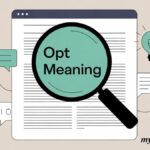Introduction
Loans play a major role in modern life. They allow us to buy homes, pay for education, cover emergencies, or invest in businesses when we don’t have enough cash upfront. But while borrowing money can open opportunities, it can also create financial stress if not handled wisely. Every loan comes with conditions — interest, repayment terms, and possible fees. Misunderstanding these details often leads to high debt, poor credit, or even loss of property.
This article will explain everything you need to know about loans: what they are, different types, how lenders decide approval, the real cost of borrowing, and how to choose the best loan for your needs. By the end, you’ll know how to borrow smartly, avoid common mistakes, and use loans as a tool to support your financial goals rather than harm them.
What Is a Loan and How It Works
A loan is an agreement where a lender gives money to a borrower, expecting repayment over time. Repayment usually includes the original amount (principal) plus an extra cost called interest. Depending on the type, some loans also involve collateral — an asset like a house or car that the lender can claim if the borrower fails to repay.
Key parts of a loan:
- Principal – the amount you borrow.
- Interest rate – the cost of borrowing, usually a percentage per year.
- Term – the length of time to repay the loan.
- Repayment schedule – monthly or periodic payments that include both principal and interest.
- Collateral – an item the lender can seize if the borrower defaults (applies to secured loans).
Common Types of Loans
Different loans serve different needs. Here are the most common ones:
- Personal Loans
- Usually unsecured, meaning no collateral required.
- Used for medical bills, home repairs, travel, or emergencies.
- Flexible but may come with higher interest if credit is poor.
- Auto Loans
- Secured by the car you buy.
- If you don’t pay, the lender can repossess the vehicle.
- Typically offer lower rates than unsecured loans.
- Mortgages (Home Loans)
- Secured by the property.
- Long repayment terms, often 15 to 30 years.
- One of the biggest financial commitments most people make.
- Student Loans
- Designed for education expenses.
- Repayment may start after graduation, with special terms or forgiveness programs available.
- Debt Consolidation Loans
- Used to combine multiple debts into one.
- Helps simplify payments and may reduce interest.
- Payday Loans
- Very short-term, usually due by next paycheck.
- Extremely high interest and risky if not paid quickly.
Key Loan Features You Should Understand
Before borrowing, it’s important to know the main features that affect cost:
- Fixed vs. Variable Interest Rates
- Fixed rates stay the same throughout the loan.
- Variable rates can change depending on the economy, making payments unpredictable.
- APR (Annual Percentage Rate)
- APR includes interest plus fees, showing the true cost of a loan.
- Always compare APR, not just the advertised rate.
- Loan Term
- Shorter term = higher monthly payments but less overall interest.
- Longer term = lower monthly payments but more interest paid in total.
- Collateral
- Secured loans require collateral and usually cost less.
- Unsecured loans have no collateral but higher rates.
- Fees & Penalties
- Common charges include origination fees, late payment penalties, and sometimes prepayment penalties.
How Lenders Decide Loan Approval
Lenders consider several factors before approving a loan:
- Credit Score – A record of how responsibly you’ve managed debt. Higher scores mean better approval chances and lower interest.
- Income & Employment – Stable income proves you can handle monthly payments.
- Debt-to-Income Ratio (DTI) – Compares your existing debt to your income. The lower, the better.
- Collateral – For secured loans, lenders assess the value of the asset you’re pledging.
- Purpose & Loan Amount – Larger or riskier loans may require stricter conditions.
The Real Cost of Borrowing
Loans are not just about interest rates. Here’s what adds to the total cost:
- Interest Calculation – Some loans charge simple interest, others compound interest, which grows faster.
- Origination Fees – One-time fee charged for processing the loan.
- Late Payment Fees – Can quickly add up and harm your credit score.
- Prepayment Penalties – Some lenders charge if you pay off early, since it reduces their profit.
- Variable Rate Risk – If your loan has an adjustable rate, future payments could rise significantly.
How to Choose the Best Loan for Your Situation
When comparing loans, consider:
- Borrow only what you truly need – Larger loans mean more debt.
- Compare multiple offers – Look at APR, terms, and fees.
- Match term length with your budget – Shorter terms save money but require bigger payments.
- Check for hidden costs – Don’t ignore origination or service fees.
- Assess repayment ability – Make sure payments won’t stretch your finances.
- Improve your credit before applying – Even a small credit boost can lower your rate.
- Read the fine print – Understand penalties, rate changes, and collateral requirements.
When Loans Are Helpful and When They’re Risky
Advantages:
- Allow purchase of big items like homes or cars.
- Provide funds for emergencies or education.
- Can improve credit if managed responsibly.
- Offer flexibility with different options for different needs.
Risks:
- High interest or hidden fees can create long-term debt.
- Default can damage your credit and cost you collateral.
- Payday and high-interest loans can trap borrowers in cycles of debt.
- Variable rates may increase unexpectedly.
Read More: Boylecheloid Flower: Myth, Reality, and How to Grow Its Look-Alike
Conclusion
Loans are powerful financial tools, but they come with responsibilities. Used wisely, they can help you buy a home, finance education, or manage unexpected costs. Misused, they can cause overwhelming debt and stress. The key is to understand every detail: interest rates, APR, fees, loan terms, and repayment obligations.
Before borrowing, assess your financial situation, compare offers from multiple lenders, and never borrow more than you can realistically repay. A well-chosen loan should support your goals without creating financial strain. With knowledge, discipline, and careful planning, loans can help you move forward in life — not hold you back.
FAQs
1. What types of loans are available?
The most common include personal loans, mortgages, auto loans, student loans, debt consolidation loans, and payday loans. Each has its own purpose and terms.
2. What’s the difference between secured and unsecured loans?
Secured loans require collateral, like a home or car, and usually offer lower interest. Unsecured loans don’t require collateral but tend to be more expensive.
3. How do fixed and variable interest rates work?
Fixed rates stay the same for the life of the loan, making payments predictable. Variable rates change with market conditions, so your payments could rise or fall.
4. What is APR and why does it matter?
APR (Annual Percentage Rate) shows the total cost of a loan, including both interest and fees. It’s the best way to compare loan offers.
5. How can I qualify for a loan with a good rate?
Improve your credit score, keep your debt-to-income ratio low, compare multiple lenders, and consider offering collateral for secured loans.










